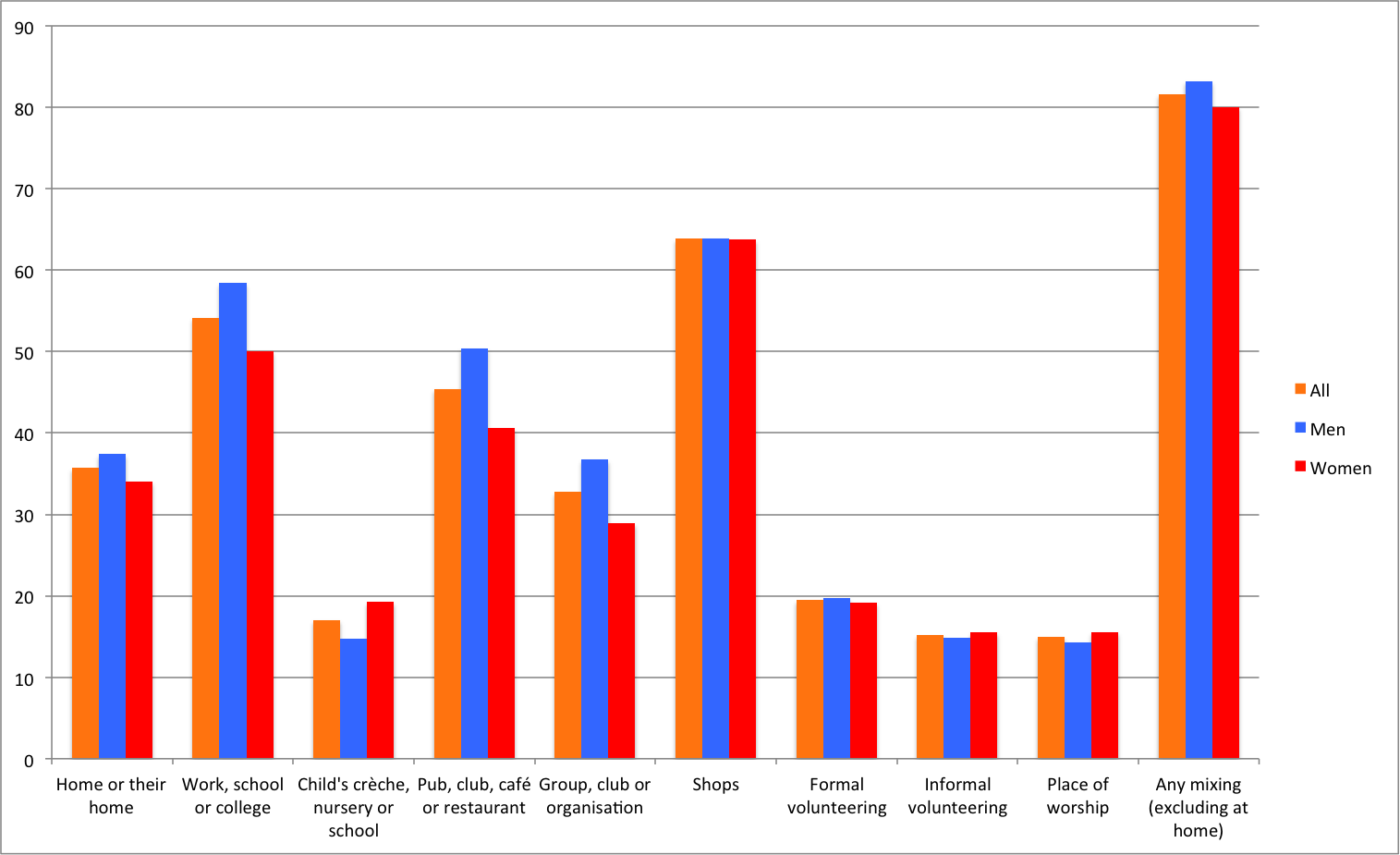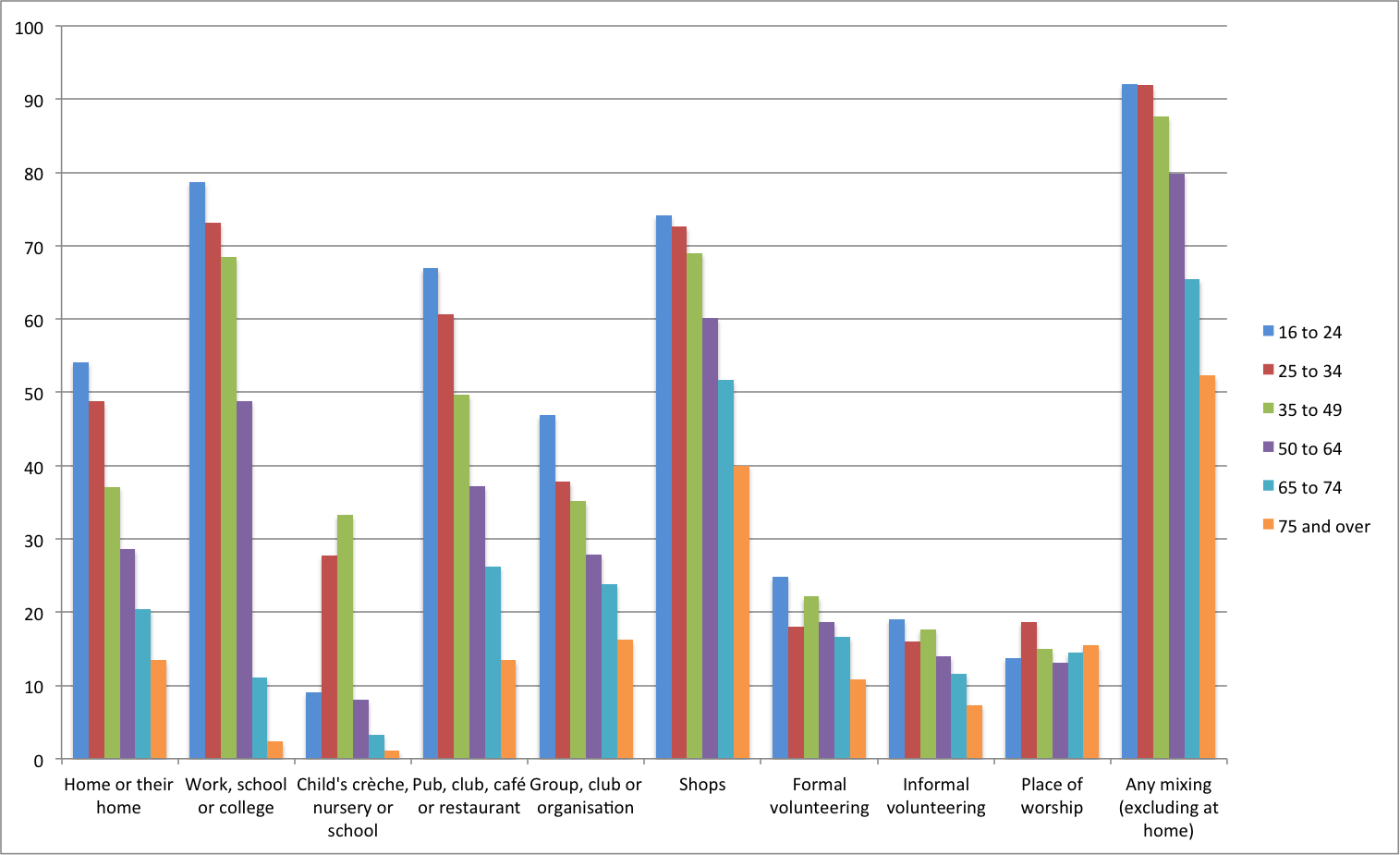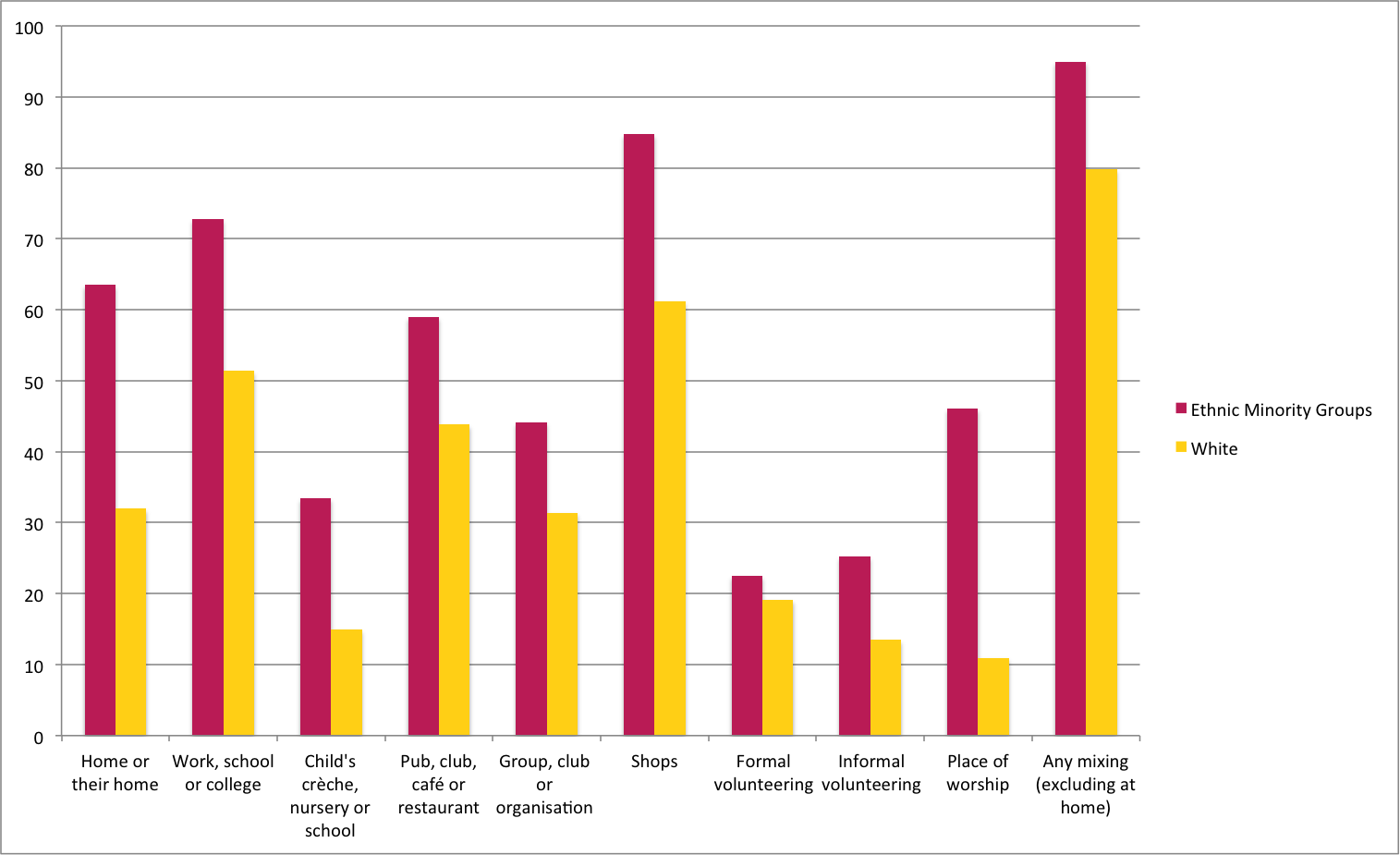The Office for National Statistics recently released results from the Citizenship Survey, conducted by the Department for Communities and Local Government for 2010-2011. The survey aimed to find out the level of integration in the UK between different ethnic and religious groups. The data was categorised by locations that people are likely to mix, for example at the shops, within schools, at work and within the home.
The data shows that nominally more men mix with other ethnic and religious groups than women, with a total of 83 per cent of men mixing outside of their home compared to 80 per cent of women.

However, when breaking the data down further, you are able to see more clearly where integration is most likely to occur, and between which age groups of people.

Integration at home was most frequent in the 16-24 age group; with 54 per cent of the category mixing with other races and religions within their homes. The largest proportion of social mixing took place expectedly in schools and in the work place, closely followed by integration at the shops and in pubs and restaurants.
The group scoring lowest for social integration was amongst those 75 years and over, however, this may be due to lack of mobility and access to a range of environments.

Finally, looking at social integration between ethnic groups compared to that of white people, ethnic minority communities were 15 per cent more likely to integrate with people from other religious and ethnic backgrounds outside of their homes, at 95 per cent, compared to 80 per cent of white people. 63 per cent of ethnic minorities also socialised within their homes, compared to only 32 per cent of white people. The smallest figure for socialisation within white groups occurred at crèches and nursery schools, with only 15 per cent of white people encountering integration of different communities, meaning that white children are less likely to learn how to integrate with other communities at a young age, compared to their ethnic counterparts.
